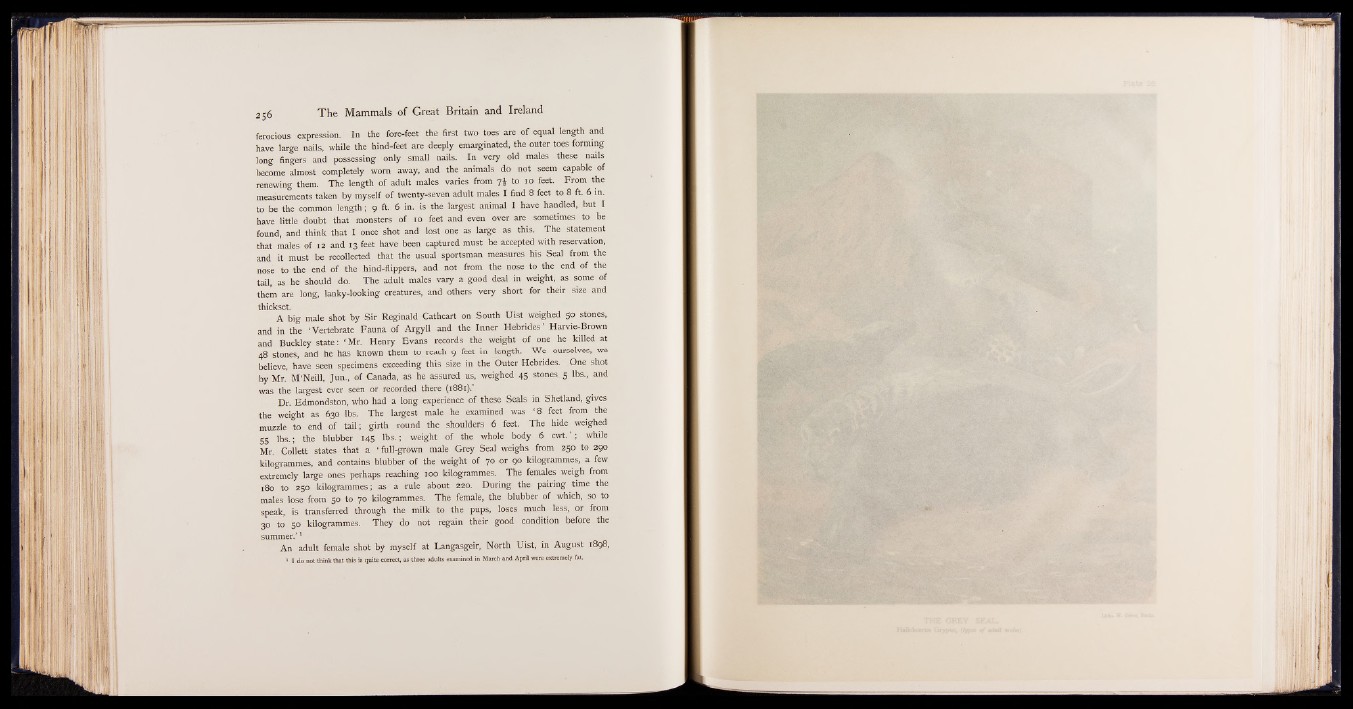
256 The Mammals of Great Britain and Ireland
ferocious expression. In the fore-feet the first two toes are of equal length and
have large nails, while the hind-feet are deeply emaiginated, the outer toes forming
long fingers and possessing only small nails. In very old males these nails
become almost completely worn away, and the animals do not seem capable of
renewing them. The length of adult males varies from 7 i to 10 feet. From the
measurements taken by myself of twenty-seven adult males I find 8 feet to 8 ft. 6 in.
to be the common length; 9 ft. 6 in. is the largest animal I have handled, but I
have little doubt that monsters of 10 feet and even over are sometimes to be
found, and think that I once shot and lost one as large as this. The statement
that males of 12 and 13 feet have been captured must be accepted with reservation,
and it must be recollected that the usual sportsman measures his Seal from the
nose to the end of the hind-flippers, and not from the nose to the end of the
tail, as he should do. The adult males vary a good deal in weight, as some of
them are long, lanky-looking creatures, and others very short for their size and
thickset.
A big male shot by Sir Reginald Cathcart on South Uist weighed 50 stones,
and in the 'Vertebrate Fauna of Argyll and the Inner Hebrides’ Harvie-Brown
and Buckley state: ‘ Mr. Henry Evans records the weight of one he killed at
48 stones, and he has known them to reach 9 feet in length. We ourselves, we
believe, have seen specimens exceeding this size in the Outer Hebrides. .One shot
by Mr. M'Neill, Jun., of Canada, as he assured us, weighed 45 stones. 5 lbs., and
was the largest ever seen or recorded there (1881).’
Dr. Edmondston, who had a long experience of these Seals in Shetland, gives
the weight as 630 lbs. The largest male he examined was ‘ 8 feet from the
muzzle to end of tail; girth round the shoulders 6 feet. The hide weighed
53 lbs.; the blubber 145 lbs.; weight of the whole body 6 cwt. ’ ; while
Mr. Collett states that a ‘ full-grown male Grey Seal weighs from 250 to 290
kilogrammes, and contains blubber of the weight of 70 or 90 kilogrammes, a few
extremely large ones perhaps reaching too kilogrammes. The females weigh from
180 to 250 kilogrammes; as a rule about 220. During the pairing time the
males lose from 50 to 70 kilogrammes. The female, the blubber of which, so to
speak, js transferred through the milk to the pups, loses much less, or from
30 to 50 kilogrammes. They do not regain their good condition before the
summer.’ 1
An adult female shot by myself at Langasgeir, North Uist, in August 1898,
1 I do not think that this is quite correct, as three adults examined in March and April were extremely fat.